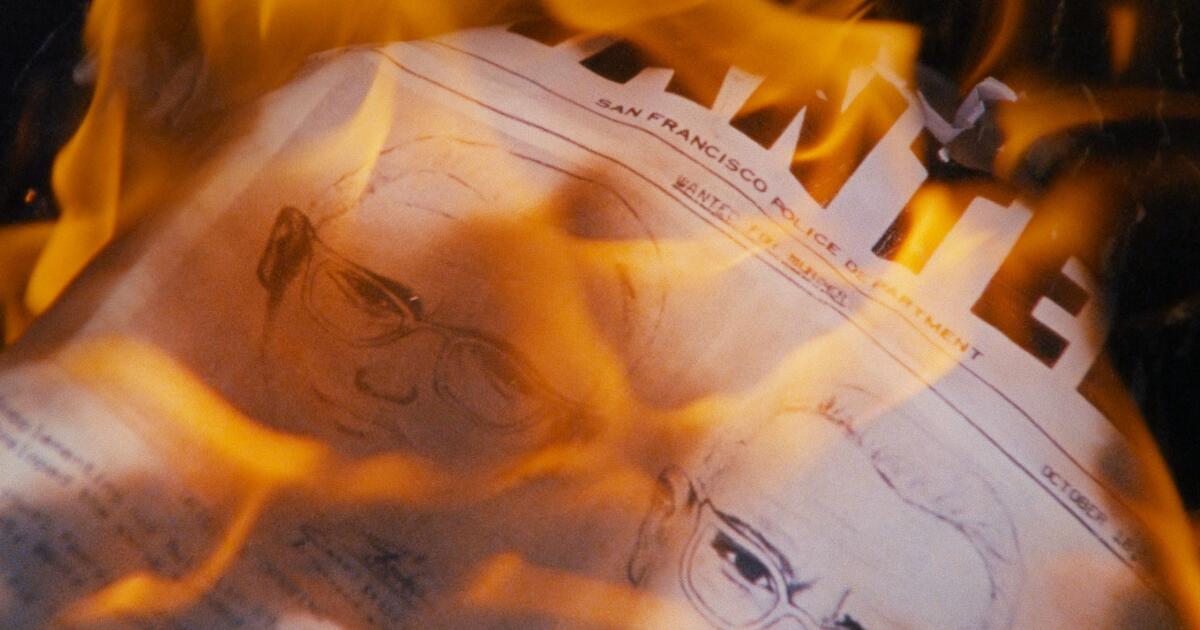‘Zodiac Killer Project’ review: Frustrated filmmaker dives into meta-therapy
No mystery is solved in Charlie Shackleton’s essayistic doodad “Zodiac Killer Project,” but the true-crime genre itself is certainly staked out and interrogated like a prime suspect. Then again, there’s nothing like the tweezer focus of an obsessive — either trying to crack a maddening case or devouring shows about them on Netflix — to put our darker yearnings for fulfillment on queasy display, while reveling in minutiae at the same time.
Shackleton, a British filmmaker with an avant-garde sensibility, was all set to make his own opus, based on the investigative musings of a Vallejo cop who believed he’d discovered the identity of the infamous Zodiac killer who terrorized the Bay Area in the late ’60s, taunting police with letters and cryptograms, never to be caught. Shackleton’s fascination with former highway patrol officer Lyndon Lafferty’s speculative memoir “The Zodiac Killer Cover-Up,” which details a years-long quest to bring his pinpointed suspect to justice in the face of a perceived conspiracy, led to a bid for the rights. When that fell through, a different film project emerged.
Composed of original footage and the director’s conversational voice-over, “Zodiac Killer Project” is the chalk outline of his missing and presumed dead documentary. Shackleton explains his conceptual framework for it over long takes of serene, sunny Vallejo locations: an empty parking lot, a church, an intersection, a wooded house. We hear what perfectly designed re-creation he would have mounted there — or, since these aren’t necessarily the sites specified in Lafferty’s narrative and Shackleton is nothing if not honest, filmed at a place just like it.
In one sense, what we’re watching is a wittily rueful pitch session for an Errol Morris-style homage that never was, flecked with inserts we learn are called “evocative b-roll” (the swinging overhead lamp, the gun in someone’s hand), shots meant to be artfully slotted alongside his imagined interviews with key participants. Shackleton, glimpsed on camera in the studio where he vamped his narration, knows his act breaks and thematic beats.
And yet his abandoned undertaking is also a mischievous explosion of a storytelling format, a knowing critique of this most-wanted genre’s longstanding tropes: the eerie credit sequences, montages and music cues. Don’t expect a rehash of the Zodiac case, nor the parts of Lafferty’s book he can’t legally talk about. Settle in for some amusing dissections of popular docuseries like “Making a Murderer” and “The Jinx,” as well as the simultaneously moralizing and exploitative “Monster: The Jeffrey Dahmer Story.”
Of course, Shackleton is an openly avid connoisseur of those titles too, and it’s sometimes difficult to discern from the glibness of his tone whether he’s pointing the finger at himself or pining over rejection from a club he clearly wanted to join. That can leave the occasionally repetitive “Zodiac Killer Project” with a shallow aftertaste to go with its smarts. But in a year that’s seen a valuable rethink of how we process crime stories — from the eye-opening documentaries “Predators” and “The Perfect Neighbor” to Caroline Fraser’s deeply researched book “Murderland” — Shackleton’s perspective is still an intriguing, worthy provocation regarding our cultural bloodlust.
‘Zodiac Killer Project’
Not rated
Running time: 1 hour, 32 minutes
Playing: Opens Friday, Dec. 5 at Alamo Drafthouse DTLA and Laemmle Glendale
